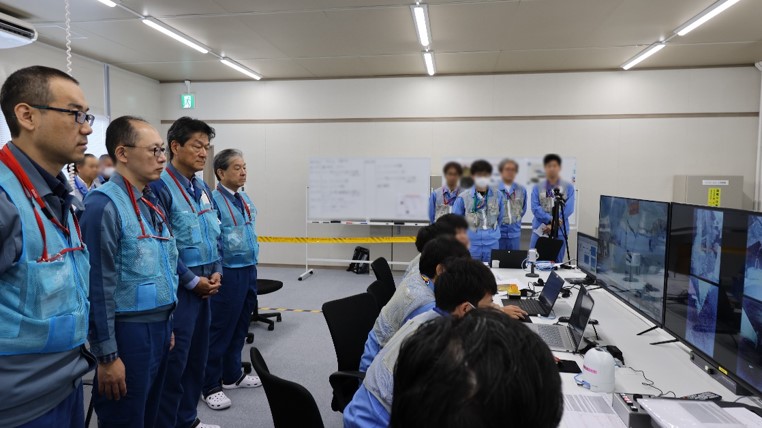A robot has delved into the radioactive ruins of Fukushima to retrieve a tiny chunk of spent nuclear fuel. It’s the first time solid fuel debris has been removed from the plant – but they’ve still got a hell of a long way to go: 880 tons of the stuff to be precise.
The remotely operated robotic arm, equipped with a telescopic camera, was able to grasp and retrieve a “small amount of fuel debris” from the floor of Unit 2’s reactor on October 30, according to the plant’s operator Tokyo Electric Power Company Holdings (TEPCO).
“From the results of primary containment vessel internal investigations, we have deduced that the accumulated debris on the surface of the floor inside the pedestal is solidified molten material that consists of fuel elements and also may contain a lot of metal,” TEPCO said in a statement.
The fuel debris will now be taken away from the Fukushima site where scientists will analyze it to gain further insight into how to remove the rest of the debris.
“By analyzing the attributes of the sampled fuel debris we will directly ascertain information such as the composition of debris at the sampling location and radioactivity density,” added TEPCO.

Workers at Fukushima watch the retrieval operation from the control room.
Image credit: TEPCO
While robotics have been used in the clean-up of Fukushima before – with mixed success – the latest move is the first time they’ve been used to actively remove meltdown debris from the site, marking a milestone in the plant’s decommissioning.
Thirteen years after the infamous disaster, TEPCO is still working to decommission the Fukushima Daiichi nuclear power plant in Ōkuma, Japan. The disaster occurred on March 11, 2011, when a massive earthquake and subsequent tsunami struck Japan. The tsunami flooded the Fukushima power plant, causing a loss of power that disabled the reactor cooling systems. Without cooling, three reactors went into meltdown and exploded, spewing a huge amount of radioactive materials into the surrounding environment.
It’s estimated that the three impacted reactors contain an estimated total of 880 tons of melted fuel debris, all of which TEPCO hopes to remove during their decommissioning effort by the year 2031. The latest retrieval of a small chunk of radioactive debris is just the beginning of the mammoth feat ahead.
Along with solid debris, the decommissioning project has also had to deal with the colossal quantities of radioactive water that accumulated after being used to cool the damaged reactor cores. In August 2023, Japan began releasing some of the treated wastewater into the Pacific Ocean, much to the annoyance of their neighbors.
TEPCO has expressed hope the entire clean-up operation will be completed in 30 to 40 years, although some speculate the target is overly optimistic.
Source Link: Robot Removes First Bit Of Fukushima's Nuclear Fuel Debris – Just 880 Tons More To Go